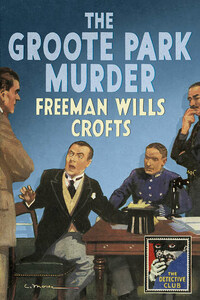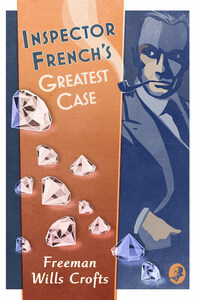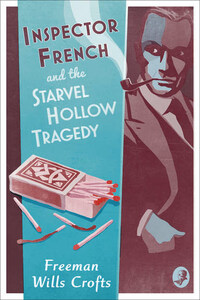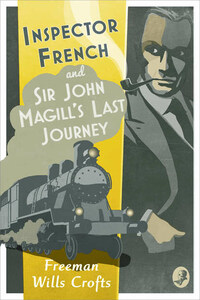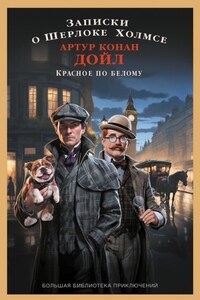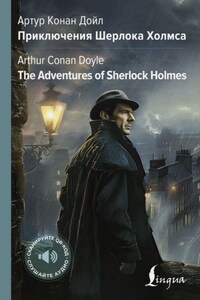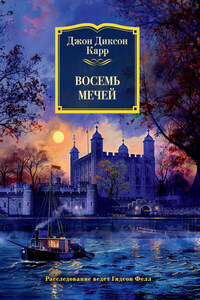âTHE DETECTIVE STORY CLUB is a clearing house for the best detective and mystery stories chosen for you by a select committee of experts. Only the most ingenious crime stories will be published under the THE DETECTIVE STORY CLUB imprint. A special distinguishing stamp appears on the wrapper and title page of every THE DETECTIVE STORY CLUB bookâthe Man with the Gun. Always look for the Man with the Gun when buying a Crime book.â
Wm. Collins Sons & Co. Ltd., 1929
Now the Man with the Gun is back in this series of COLLINS CRIME CLUB reprints, and with him the chance to experience the classic books that influenced the Golden Age of crime fiction.
Published by COLLINS CRIME CLUB
An imprint of HarperCollinsPublishers Ltd
1 London Bridge Street
London SE1 9GF
www.harpercollins.co.uk
First published in Great Britain by The Crime Club by W. Collins Sons & Co. Ltd 1923
Copyright © Estate of Freeman Wills Crofts 1923
Introduction © Estate of Freeman Wills Crofts 1937
Cover design © HarperCollinsPublishers Ltd 1923, 2017
A catalogue copy of this book is available from the British Library.
This novel is entirely a work of fiction. The names, characters and incidents portrayed in it are the work of the authorâs imagination. Any resemblance to actual persons, living or dead, events or localities is entirely coincidental.
All rights reserved under International and Pan-American Copyright Conventions. By payment of the required fees, you have been granted the non-exclusive, non-transferable right to access and read the text of this e-book on screen. No part of this text may be reproduced, transmitted, down-loaded, decompiled, reverse engineered, or stored in or introduced into any information storage and retrieval system, in any form or by any means, whether electronic or mechanical, now known or hereinafter invented, without the express written permission of HarperCollins.
Source ISBN: 9780008159337
Ebook Edition © April 2017 ISBN: 9780008159344
Version: 2017-03-07
WE are going, you and I, to write a detective novel, or so I am informed. Let us see, then, how we would set about it and what we would find ourselves up against.
Necessarily we must follow a hypothetical method, for if we asked a hundred detective-novelists how they worked, we should probably get a hundred quite different replies. And we are going to write a detective story, which we are doubtless agreed deals with detection and in which the problem is supreme: not a thriller, which depends on conflict and thrills, nor yet a crime novel, which is the history of some particular crime, usually from the criminalâs point of view.
Before we begin we must settle one or two points about our detective. Is he to be a gifted amateur, a professional private detective, or a man from the C.I.D.? Is he to be a âcharacterâ or an ordinary humdrum citizen? Is he to work alone or to have a Watson? Suppose you settle these points? You have? Then letâs get down to it.
If weâre lucky we shall begin with a really good idea. This may be one of five kinds. Firstly, it may be an idea for the opening of our book: some dramatic situation or happening to excite and hold the readerâs interest. The standard way of finding a body in the first chapter, if hackneyed, is hard to beat.
Secondly, our idea may be for the closing or climax of our book. This must also be dramatic. As an example I suggest the well-known situation in which Tom, who thinks Jack is dead and has impersonated him, is unexpectedly confronted with Jack in a police office or court of law.
Our idea, thirdly, may be for a good way of committing a crime, probably a murder. It should be novel and ingeniousâbut not too ingeniousâand if possible concerned with things with which the man in the street is familiar. This is probably the most usual way of starting work on a book. Every detective fan will think of dozens of examples.
A fourth kind of idea on which to build a book is that we shall write about some definite crime, such as smuggling, gun-running, coining, arson, or frauds in high finance.
Lastly, our idea may be simply to place the action in a definite setting, such as a mining setting, or a golf or fishing setting, or to lay our scenes in a certain place: a bus or an office, an opium den or Canterbury Cathedral.
We may of course build our book on some idea which does not fall under one of these heads. For instance, Dr Austin Freemanâs book,
